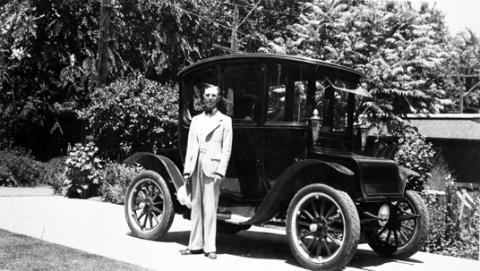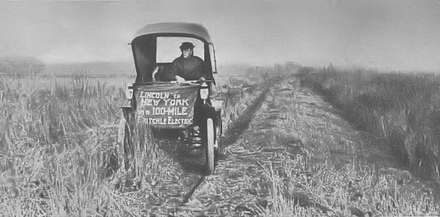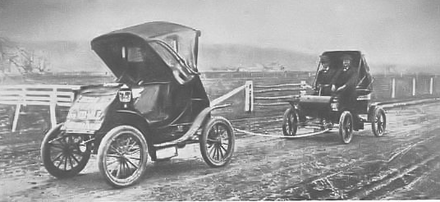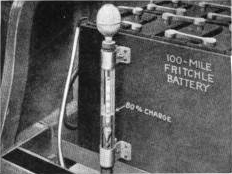Oliver Parker Fritchle was an American chemist who opted for the electric car as a sustainable and functional form of transportation. But the main quality is that it did so more than 100 years ago at the beginning of the automobile era where electric and combustion engine coexisted for a few years. To demonstrate his bet’s viability, he made an epic journey between the cities of Lincoln and New York, separated by no less than 1740 miles.
This October will mark 112 years of the feat that led this entrepreneur to organize a competition to see which company had the best electric car on the market. An event that did not have the industry’s response, which led him to undertake this crazy solo journey.
One of the motivations for organizing this event was that the incipient combustion engine vehicle competitions, such as the Glidden Tour, had excluded electric cars for indicating that they could not travel the long distances of each day. Something that he indicated did not correspond to reality.
A 1,740 mile journey on roads at the controls of his Victoria Phaeton. Some routes that have nothing to do with the current ones, in which, through prior planning, the recharging infrastructures were prepared to allow each day to be completed. Some infrastructures in part already in operation, which determined the final route that would involve moving the start to Lincoln, Nebraska, precisely because it had more stations to load the vehicle.
A route in dire conditions due to the fact that many sections were not minimally prepared for the circulation of a vehicle, which made each section real torture for the almost always lonely driver. Difficulties added the orientation problems on some unmarked roads, which made him lose a great deal of time and kilometers.
In total, 29 hard days of travel, 21 of driving, and 8 of rest, with a daily average of 90 miles in days not only characterized by the roads’ brutal conditions, but also by a very unfavorable climate that made his adventure even more difficult.
Another big headline has been the excellent performance of the electrical system. Repairs were limited to a flat tire outside of Chicago, a blown 150-amp fuse, and a set of headlights. The brakes also needed repairs that the protagonist indicates could have been avoided by coating them with asbestos. Still, it was not done to keep the vehicle with its factory specifications.
On one occasion, he had to be towed by a vehicle with a combustion engine when he ran out of battery just 2 miles from the recharging point.
A recharge that would give a chapter of its own, since it was currently a challenge to find a shot 100 years ago, was an almost impossible mission. To do this, he has occasionally used equipment such as the dynamo that powered the doctors’ X-ray machines, hooked up to a direct connection in a community power plant.
At most of the stops, he drew on the shots that were counted in the workshops or warehouses where he left his vehicle at night. But on other occasions, it had to be Fritchle himself who prepared the installation. Something that in his words supposed that trips of this type was only possible for people with excellent knowledge about electricity.
Unfortunately, an epic adventure did not help electric cars cope with models with a combustion engine, with more autonomy, which led the inventor himself to develop a hybrid version in 2016 using a 4-cylinder gasoline engine.
But the idea did not succeed, and in 1917 the company ended up closing its activities due to the impossibility of competing against vehicles with a combustion engine.




